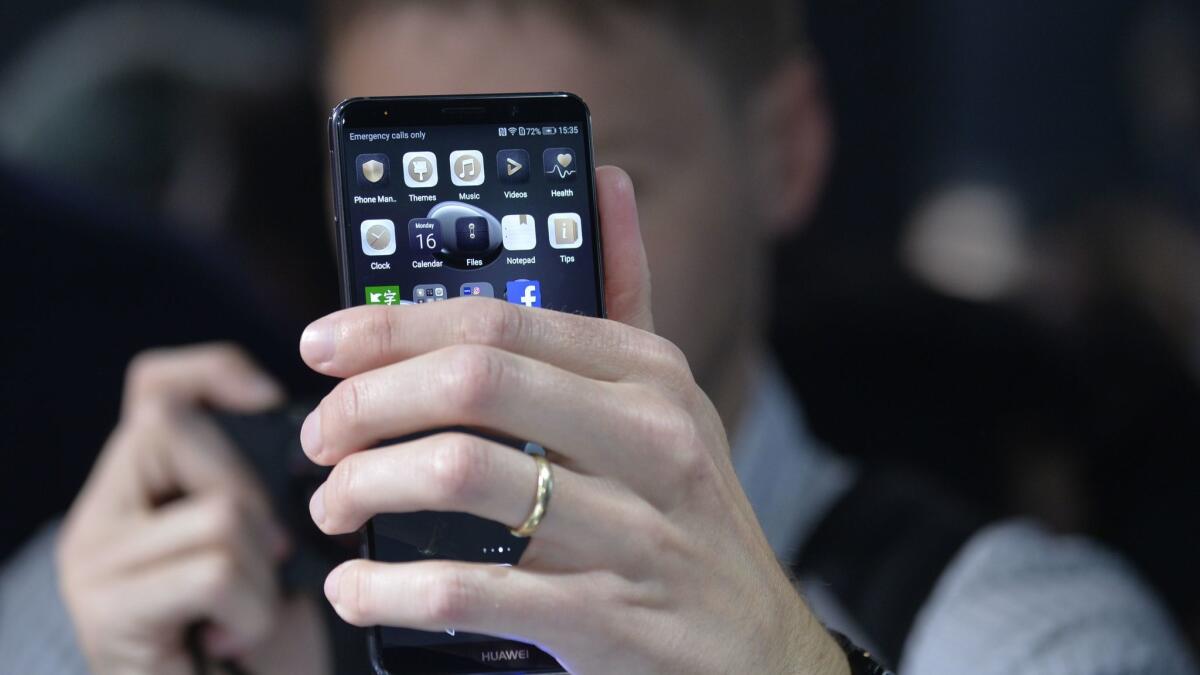Huawei rolls out home-grown operating system to replace Android amid the trade war

- Share via
Huawei Technologies Co. took the wraps off its HarmonyOS operating system Friday, offering the first glimpses of in-house software that may someday replace Google’s Android system and reduce its reliance on American technology.
To begin with, the open-source software will skip smartphones and instead find its way into everything from cars and watches to personal computers by 2020, Richard Yu, chief executive of the consumer business, said during a launch event. Earbuds and virtual reality goggles will follow. Huawei is considering running the OS on its upcoming flagship Mate 30 smartphone, he told reporters.
“Because we support Google’s Android ecosystem, we will prioritize Android for smartphones. If we can’t use Android, we can install HarmonyOS quickly,” Yu said at Huawei’s developers conference in Dongguan, China. “We had a great chance to become the world’s biggest vendor by shipment — if not for the trade war.”
HarmonyOS, previously code-named Hongmeng, or Ark, is an important part of Huawei’s effort to develop alternatives in response to sanctions on American technology it needs to make its gear. Underscoring the unpredictability of supply, the White House is delaying a decision about licenses for U.S. companies to resume selling to Huawei.
China’s largest technology company has found itself at the center of sensitive trade negotiations between Beijing and Washington, with the U.S. accusing China of stealing technology and posing a risk to its national security. Regardless of how the talks play out, Trump administration curbs have all but smothered Huawei’s goal of overtaking Samsung Electronics Co. to become the world’s largest maker of smartphones.
“Our HarmonyOS is more powerful and secure than Android, and it has greater distributed capability and is future-facing,” Yu said. “Can HarmonyOS be installed on smartphones? Of course.”
For HarmonyOS to be successful, Huawei will need developers to build apps for its ecosystem — a major question mark around its fledgling software. Last year, it spent at least $70 million to lure developers to work on its homegrown OS, and the company may invest more this year, said Yu. “The biggest attraction is our profit-sharing scheme. We may only keep 10% of the app profits and leave the rest to developers,” he said.
How users will take to HarmonyOS is still unknown. Yu went into back-end technical details but refrained from describing consumer-facing features, suggesting it may not yet be ready for prime time.
To help with app migration, HarmonyOS will be built on the Linux and Huawei’s own LiteOS kernels for now, Yu said, which will change in future generations of the OS.
More to Read
Inside the business of entertainment
The Wide Shot brings you news, analysis and insights on everything from streaming wars to production — and what it all means for the future.
You may occasionally receive promotional content from the Los Angeles Times.










